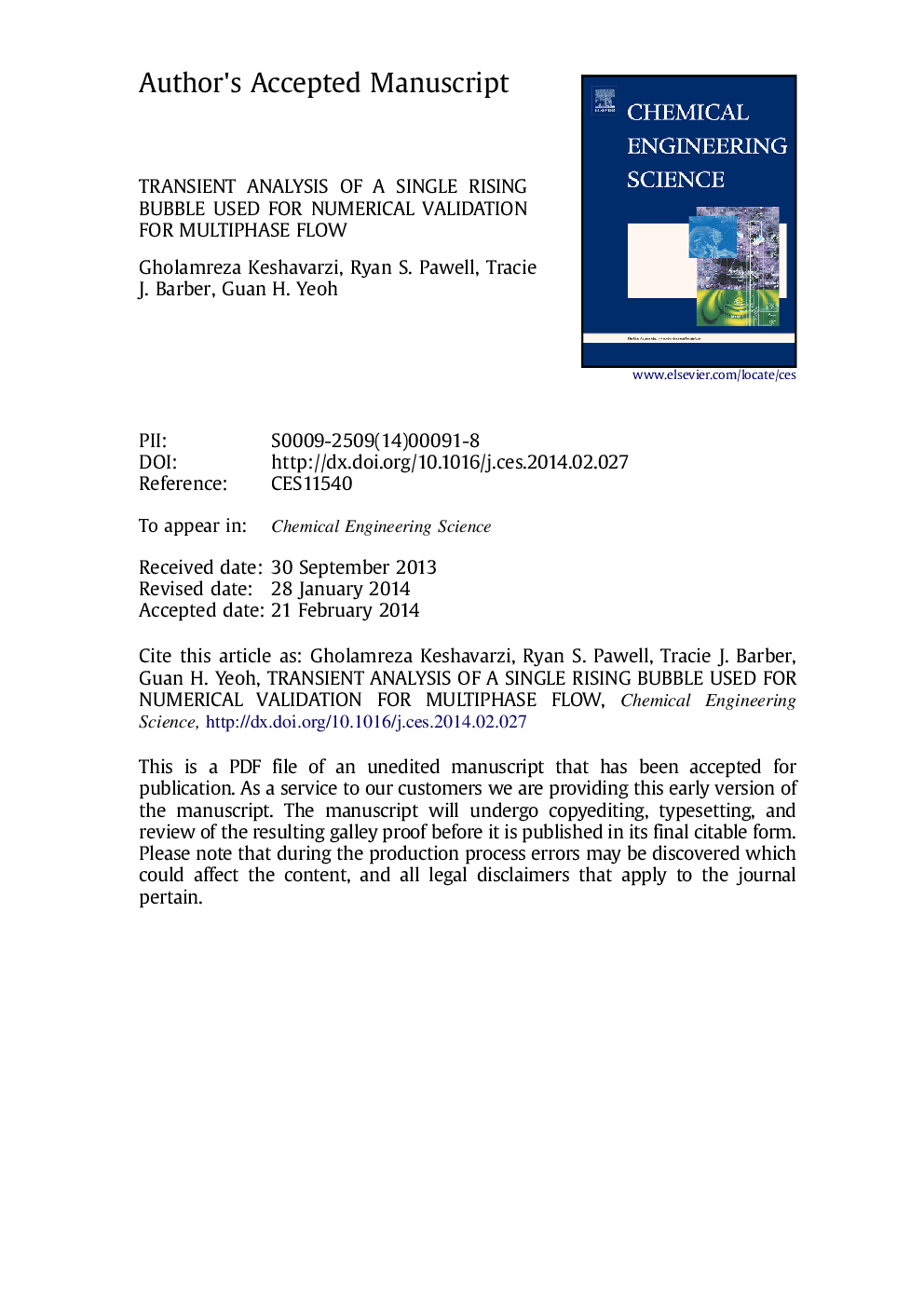| Article ID | Journal | Published Year | Pages | File Type |
|---|---|---|---|---|
| 6591301 | Chemical Engineering Science | 2014 | 28 Pages |
Abstract
Accurate tracking of multiphase interfaces (such as an air bubble in a fluid) is difficult yet significant to many engineering processes. Computationally, various tracking methods have been developed, including the volume of fluid (VOF), and coupled level set and volume of fluid (CLSVOF) methods. In order to accurately assess the small-scale differences between different interface capturing methods, a comprehensive experimental dataset is required for validation, including detailed information describing the interface deformation, and transient development of the stage by stage shape data. These interfacial details are better investigated from a two-dimensional (2D) rather than three-dimensional (3D) comparison, because the computational resources for determining an accurate shape can be maximized, and the interfacial complex deformation is difficult to analyze in 3D. In this paper, the fully developed shape and subsequent deformation of 2D rising bubbles have been captured experimentally and analyzed in detail using image processing. These results are then compared with the corresponding VOF and CLSVOF results, demonstrating the usefulness of the experimental dataset as a validation tool.
Related Topics
Physical Sciences and Engineering
Chemical Engineering
Chemical Engineering (General)
Authors
Gholamreza Keshavarzi, Ryan S. Pawell, Tracie J. Barber, Guan H. Yeoh,
